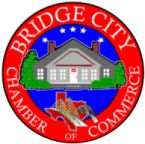
Uncovering the Secrets of Talent Retention: A Contrarian Perspective
I’ll say it – in our Silicon Valley-obsessed culture, long hours are the broadly recognized measure of someone’s value to a company. To most of us, long hours are a signal of productivity, commitment, and future results. This belief is so widespread and embedded into the fabric of work culture that I’m not sure sharing examples would be useful, but I’ll share a few recent anecdotes for the skeptics.
A go-to-market leader recently told me he was pleased with his head of sales. “He’s a killer – he works 18-hour days.” A founder responded to my email, saying, “Hey Allison, sorry for the slow reply here. Can’t remember sleeping.” And one well-known VC tweeted something along the lines of, “I’m doing my usual routine of emailing my founders on Saturday at 8am to see how long it takes them to respond.” I’m pretty sure he was kidding, but the responses to his tweet indicated that many people were totally on board with the underlying philosophy of working long hours, which I think was what caused him to delete his tweet.
Our celebrity role models work very hard too. Jack Dorsey ran two companies simultaneously for a while, and Elon Musk is worshiped by a massive audience in part for his superhuman work ethic. Enough said.
Some people will be surprised to see me express skepticism of the value of work ethic. I was raised by an immigrant mother whose own mother fled two countries as a refugee, and by a father who achieved his version of the American dream – hard work was a core family value. I worked long hours for many years. When I worked in private equity investing, I worked from 9am to 10 or 11pm most days without a break, working 110 hours for three weeks in a row during one deal. I didn’t work nearly that hard at Gainsight, but I still worked 60 hours per week on average. Intentionally or not, when I was there, we did have a culture where people worked very hard.
Today, as an investor, I theoretically stand to benefit from my founders and their teams working long hours. But the purpose of this article is to counter that assumption.
The Surprising Benefits of Short Work Hours
Last year, I met and invested in the fastest-growing SaaS company ever. They grew from zero to $40M in ARR in 9 months with just 9 employees. The founders work roughly 9am to 5pm and are attentive parents. They don’t subscribe to many Silicon Valley values – they think Twitter is a waste of time, and it’s the home of “amateurs who aren’t focused on building real businesses.”
When I first met the founder of another rocketship company, he told me, “I’ve worked at a number of tech companies. They all felt like a hard slog. But this company that we’re building – I’m almost embarrassed to say it, but it feels easy.”
In my experience with companies like these and others, there are a few reasons to believe that short work hours are a signal of success when coupled with strong metrics. Short hours + strong metrics may be a sign of:
-
Large, immediately addressable market: You don’t have to spend time convincing a small set of customers to buy. Enough people are in the market that you can just onboard whoever is raising their hand. The timing is great.
-
Strong product-market fit: The solution for that great market is also great. Customers buy, adopt, and expand without much involvement from you.
-
Strong positioning: You communicate about your company in a way that helps people easily understand how your product fits in with their current tech stack. You have partnerships and product integrations with the right companies.
-
Limited competition: You don’t have to waste your time fighting small battles.
-
Talented team members: They can do the same amount of work in less time and find better solutions.
-
Strong alignment across your team: No work is wasted outside your priorities, and synergies among team members are high.
-
Strong founder: The founder made the decision to focus on this terrific market with good timing and limited competition, had the insight and execution ability to achieve strong product-market fit, and was able to recruit and retain strong leaders, delegate well, and get everyone aligned. All the factors above reflect well on the founder.
Would I want to invest in a company with these attributes? Absolutely. Send them my way.
Conversely, long hours, even if coupled with strong metrics, may be a sign of the following:
-
The market is not large enough right now: The company was started too early, and arguably should not exist at this moment. You spend a lot of time trying to convince people that you’re worth their time.
-
The product is bad: So you spend a lot of time implementing, integrating, and driving adoption. Users shouldn’t have to be pushed to adopt.
-
Poor positioning: Your stated category may not make sense to buyers. You don’t fit into their conception of their problem and their tech stack. So you waste a lot of cycles trying to push your solution onto a market that doesn’t get it.
-
High competition: You spend all your time fighting tooth and nail.
-
Not talented team members: They solve situations rather than build systems to reduce future work. And the founder works very hard to compensate for this.
-
Poor alignment: Everyone is running around like chickens with their heads cut off.
-
Poor founder: The founder made the decision to focus on this market that isn’t ready or is too competitive, couldn’t arrive at product-market fit, isn’t a strong communicator, struggles to recruit and retain a strong team, and/or can’t align everyone.
Gross.
The Perks of Prioritizing Productivity Over Punishment
For a long time, I thought, “Why not have the best of both worlds? If we had all seven positive attributes above AND we had a team that worked very hard, we could grow even faster than if we just had those seven attributes. If we work a little bit harder, we can always sell an incremental customer, release a feature a few days earlier, or write one more blog post.”
There are many historical examples of companies that have terrific metrics and work long hours. I see a few reasons for that:
-
Habit and Culture: The “work hard, play hard” mentality is deeply ingrained in our collective psyche, especially in the tech industry. It’s what we’re used to, and it’s what we see modeled by our role models.
-
Lack of Confidence: Some founders may feel that if they’re not working around the clock, they’re not doing enough. They’re afraid that if they don’t grind, they’ll fall behind.
-
Short-Term Thinking: The pressure to hit growth targets and impress investors can lead founders to focus on short-term gains rather than sustainable, long-term success.
However, as I’ve learned from the companies I’ve invested in, there is a better way. By prioritizing productivity over punishment, you can create a culture that attracts and retains top talent, while also driving impressive business results.
Embracing a New Paradigm: The Bridge City Way
In Bridge City, we’re seeing a growing number of employers who are bucking the long-hours trend and reaping the rewards. These forward-thinking companies are creating work environments that prioritize work-life balance, creativity, and sustainable growth.
One such company is Bridge City Software, a rapidly growing SaaS firm that has become known for its exceptional talent retention. The founders, Alex and Samantha, are intentional about cultivating a culture of productivity and collaboration, rather than one of constant overtime.
“We don’t believe in the ‘work harder, not smarter’ mentality,” says Samantha. “Our team members are encouraged to take regular breaks, pursue their passions outside of work, and find ways to streamline their tasks. The result? We’ve been able to consistently deliver innovative solutions to our clients, while maintaining a happy, engaged workforce.”
Another local success story is Bridge City Biotech, a thriving pharmaceutical company known for its cutting-edge research and development. Despite the demanding nature of their industry, the leadership team has implemented policies that prioritize employee well-being.
“We’ve found that when our team members feel rested, inspired, and supported, they’re able to produce their best work,” says CEO Dr. Jada Nguyen. “Instead of pushing for 60-hour workweeks, we encourage our scientists to take regular breaks, collaborate with colleagues, and pursue their own professional development goals. It’s a win-win for everyone.”
These companies, and others like them, are proving that you don’t have to sacrifice your personal life to achieve professional success. By focusing on the factors that truly drive productivity and innovation – things like strong product-market fit, talented teams, and clear alignment – they’re able to create work environments that are both fulfilling and high-performing.
The Bridge City Advantage: Attracting and Retaining Top Talent
So, what can other employers in Bridge City learn from these trailblazing companies? Here are a few key best practices:
-
Prioritize Work-Life Balance: Implement policies that support flexible schedules, remote work options, and generous paid time off. Encourage your team to take breaks, pursue hobbies, and maintain a healthy work-life balance.
-
Foster a Culture of Collaboration and Creativity: Create opportunities for your team to connect, brainstorm, and explore new ideas. Invest in team-building activities, ongoing training, and spaces that inspire innovation.
-
Emphasize Productivity Over Presence: Focus on outputs, not inputs. Set clear goals and expectations, and trust your team to manage their time and workflows in the way that works best for them.
-
Attract and Retain Top Talent: Leverage your company’s unique culture and values to draw in the best and brightest. Offer competitive compensation, robust benefits, and the opportunity to be part of something truly meaningful.
-
Cultivate Strong Alignment and Accountability: Ensure that everyone on your team understands the company’s vision, their role in achieving it, and the metrics by which they’ll be evaluated. Foster open communication and continuous feedback.
By embracing these best practices, employers in Bridge City can create a powerful talent advantage – one that not only attracts top candidates but also inspires them to stay and grow with your organization.
Conclusion: Redefining Success in the Bridge City Business Landscape
In a world where long hours are often mistaken for productivity, the companies in Bridge City are charting a new course. They’re proving that you don’t have to sacrifice your team’s well-being to achieve outstanding results. By prioritizing factors like strong product-market fit, talented teams, and clear alignment, they’re able to create work environments that are both fulfilling and high-performing.
As more employers in Bridge City follow their lead, the city is poised to become a magnet for the best and brightest talent. By offering a unique blend of professional opportunities and quality of life, these forward-thinking companies are redefining what it means to succeed in the modern business landscape.
So, if you’re an employer in Bridge City, I challenge you to rethink your approach to talent attraction and retention. Embrace the principles of productivity over punishment, and watch as your company becomes a shining example of what’s possible when you put your people first. The future of talent in Bridge City is bright – and it starts with you.


